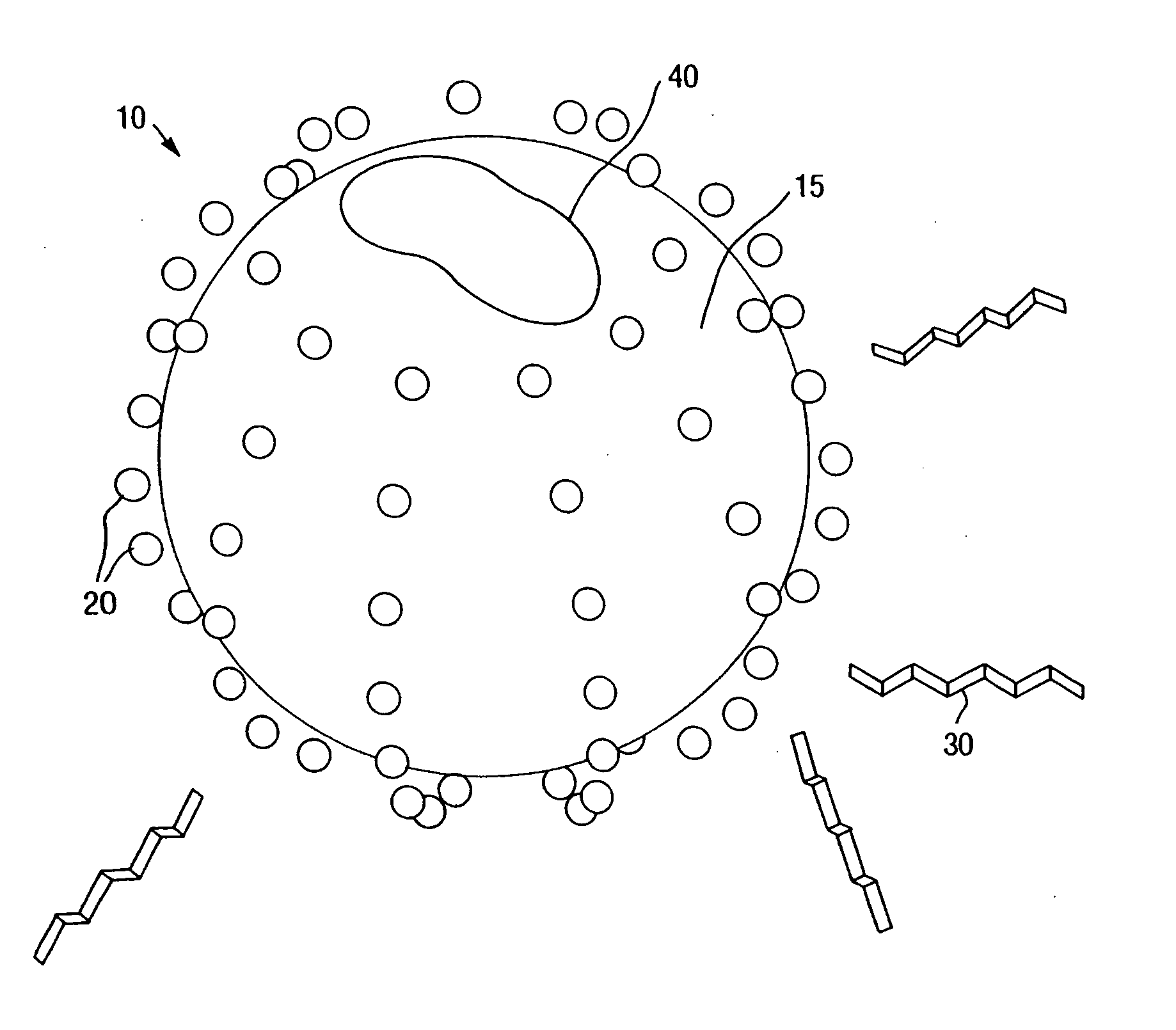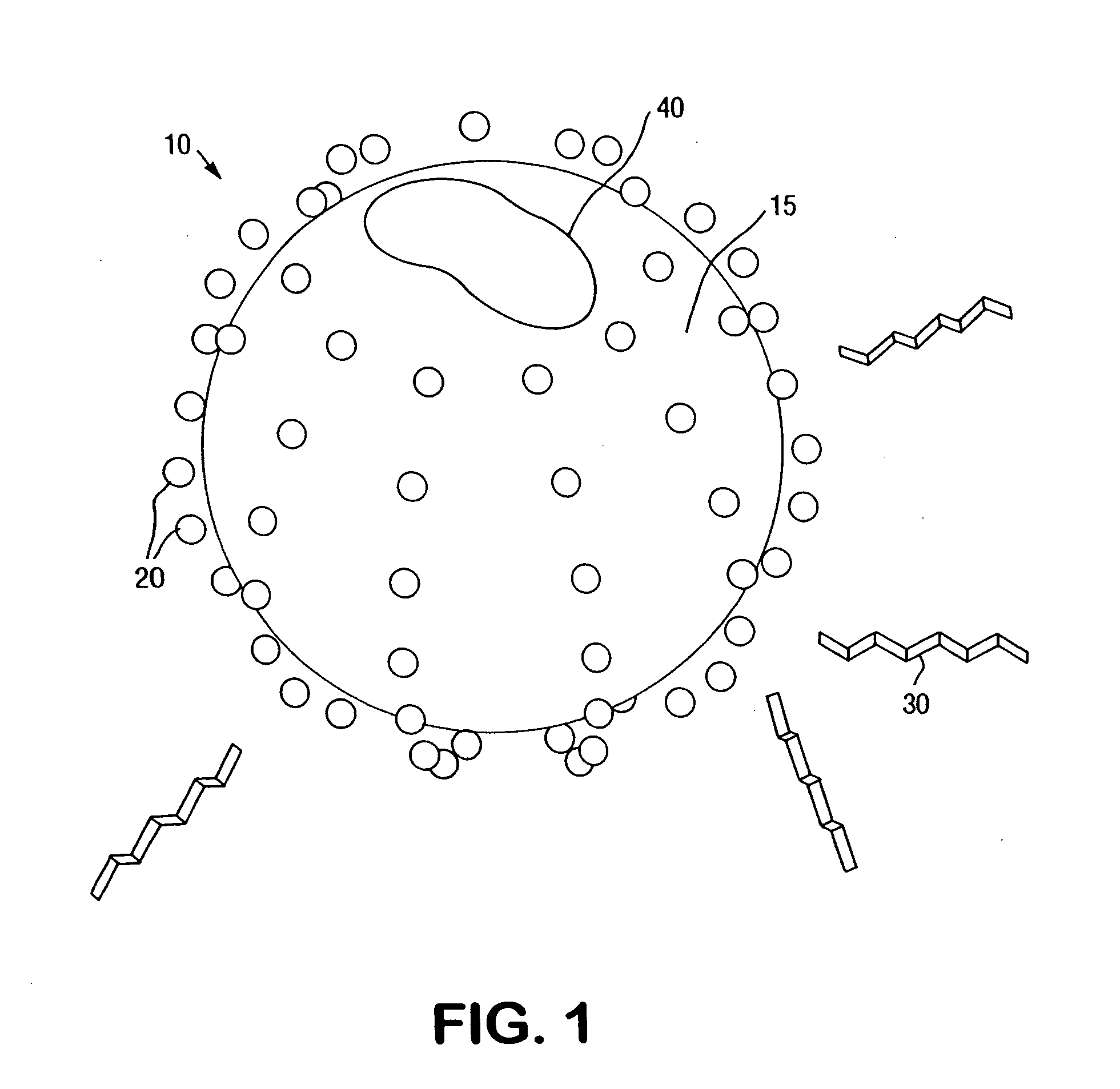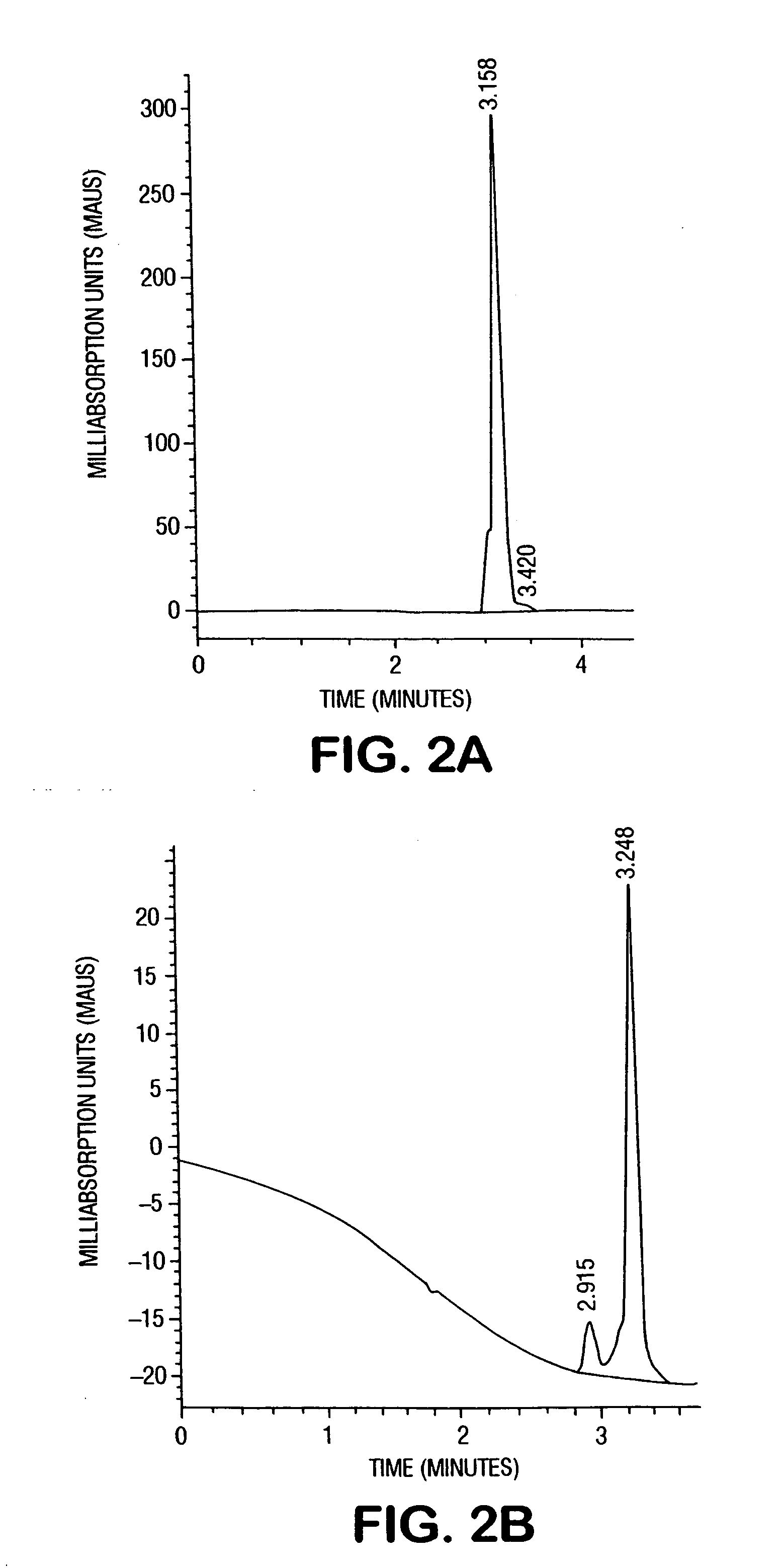Metal ion modified high surface area materials for odor removal and control
a technology of high surface area and metal ion, applied in the direction of disinfection, textiles and paper, synthetic resin layered products, etc., can solve the problems of low deodorizing ability of activated charcoal, low absorbency, and low black color of activated charcoal, so as to achieve efficient and effective removal and target the effect of removal
- Summary
- Abstract
- Description
- Claims
- Application Information
AI Technical Summary
Benefits of technology
Problems solved by technology
Method used
Image
Examples
example 1
[0058] A dilute suspension of modified silica nanoparticles was made by adding 1 milliliter of SNOWTEX C®, available from Nissan Chemical Industries, Ltd., Houston, Tex., to 9 milliliters of deionized water. The suspension was pipetted in equal portions into four cuvets. Solutions of 0.01 percent by weight of each of copper chloride (CuCl2), silver nitrate (AgNO3), and zinc chloride (ZnCl2), all from Aldrich Chemical Company, Milwaukee, Wis., were prepared and one drop of each was added to a separate cuvet. The Zeta Potential of each of the four suspensions was then measured by a Zetapals Unit, available from Brookhaven Instruments Corp., Holtsville, N.Y. The Zeta potential of the SNOWTEX C control suspension was measured to be −25 millivolts. The Zeta potential of both the SNOWTEX C / copper chloride suspension and the SNOWTEX C / silver nitrate suspension were measured to be −11 millivolts. The Zeta potential of the SNOWTEX C / zinc chloride suspension was measured to be −8 millivolts. ...
example 2
[0061] The SNOWTEX C / copper ion suspension was tested on human urine to determine the effectiveness in odor reduction. HPLC, as described in Example 1, was used to measure the components of urine (obtained from the inventor). One drop of the SNOWTEX C / copper ion suspension from Example 1 was tested against 0.1 gram of Purite Micronet MN-150 latex particles, available from Purolite Company, Philadelphia, Pa., and 0.1 gram of activated charcoal, available from Aldrich Chemical Co., Milwaukee, Wis. Each of these was added to a separate 3 grams of urine. The urine odor of the sample with the SNOWTEX C / copper ion suspension was almost completely eliminated after 3-5 seconds, compared to about 10 minutes for the activated charcoal. The latex particles never did remove the odor. FIG. 3A shows the HPLC chromatogram of the urine sample and FIG. 3B shows the chromatogram of the urine sample after the modified silica nanoparticles were added. Table 1 summarized the comparison of the HPLC peaks...
example 3
[0062] Silica nanoparticles were obtained under the commercial name Snowtex OXS (Nissan Chemicals, Houston, Tex.) as an aqueous suspension (10% wt / wt). The stock solution (50 ml) was diluted with a solution of aqueous sodium bicarbonate (350 ml, 0.05 M, Aldrich Chemical Company, St. Louis, Mo.) to generate a solution with a final pH of 8.7. An aqueous solution of copper(II) chloride (0.799 g in 100 ml, Aldrich Chemical Company, St. Louis, Mo.) was added to the Snowtex solution via an addition funnel with vigorous stirring. After stirring for several hours, the solvent was removed from the resulting light blue solution in vacuo, the isolated solid was washed with several portions of distilled water and allowed to air dry at room temperature. The pale blue solids were pulverized to obtain a fine powder which was characterized via analytical methods to further probe the fundamental relationship between the silica and the metal. The procedure described above can also be adapted to prepa...
PUM
| Property | Measurement | Unit |
|---|---|---|
| Length | aaaaa | aaaaa |
| Area | aaaaa | aaaaa |
| Surface area | aaaaa | aaaaa |
Abstract
Description
Claims
Application Information
 Login to View More
Login to View More - R&D
- Intellectual Property
- Life Sciences
- Materials
- Tech Scout
- Unparalleled Data Quality
- Higher Quality Content
- 60% Fewer Hallucinations
Browse by: Latest US Patents, China's latest patents, Technical Efficacy Thesaurus, Application Domain, Technology Topic, Popular Technical Reports.
© 2025 PatSnap. All rights reserved.Legal|Privacy policy|Modern Slavery Act Transparency Statement|Sitemap|About US| Contact US: help@patsnap.com



